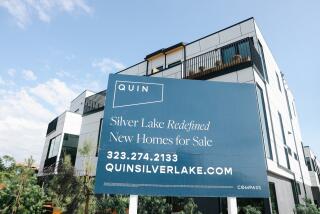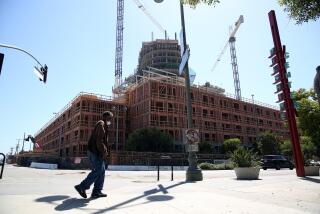Boom Is Over, But Long-Term Trend’s Up
Toward the end of the 1980s some people believed that home prices would continue to appreciate indefinitely at double-digit rates. This type of thinking is often prevalent at the tail end of a boom.
Now the boom is over and we are in a downturn, but we must always remember that the real estate market is cyclical, and long term the trend is always up.
The 1981-83 real estate slump was described by Mark Taper, the founder of American Savings, one of the largest savings association in the nation, as “the worst since the Great Depression.” During that period, the prime rate rose to 18%.
By comparison, today’s interest rates are affordable and mortgage money is available. But even with affordable rates, home sales are down in many areas. Prices in close-in areas are soft and expensive homes in outlying areas have dropped in price.
Why has the real estate market gone into a slump?
The home buying decision is controlled by many factors. Most important is consumer confidence, which, according to most recent reports, is at its lowest point in nine years. If people are concerned about the country going to war or an impending recession, they postpone their purchase decisions--whether it be cars, jewelry, art or real estate.
This lack of consumer confidence has also caused many sellers to accelerate their decisions to place their homes on the market, and we now have more sellers and fewer buyers, causing a glut of listings on the market. This glut increases each month because home purchases are down 25% to 30%.
On the positive side, we Southern Californians have tremendous confidence in the value of real estate, especially our homes. We all need a place to live, and the only alternative is renting, which is the equivalent of 100% interest payments with no deductions.
Therefore, we become increasingly stubborn when we are told we should sell our home at a loss. Many of us simply hang in there and wait for better times.
What about sellers who must sell their home? It is estimated that today only 30% of properties listed with realtors sell during the initial listing period. Why are some homes selling and others staying on the market for what seems like forever?
The answer is, of course, price. Sellers who want to sell their homes today must price them so that they are more competitive than most of the properties on the market.
Today’s buyers have absorbed all the media horror stories about the impending real estate crash, but a part of them also believe that long-term prices will increase.
Their quandary is, “What if prices go down further before the market turns around?” Is the fear on the part of buyers justified?
We are all infected by what we are exposed to in the media. For years we heard about the real estate problems of Texas and Colorado. More recently, we also heard that Arizona was experiencing a real estate recession.
There were valid reasons for the problems facing these areas. The economies of Texas and Colorado were dependent on the petroleum industry and when the price of oil fell, their economies collapsed.
But what about California--especially Los Angeles? What has happened here to cause the great slowdown? I submit that it is mostly an echo of the media.
We are exposed to more media than ever before. As TV news broadcasts get longer, they must provide more material. A real estate slump creates tremendous interest, especially since about half the population are homeowners.
We are told that California, if it were a nation, would rank as one of the top 10 nations in the world based on gross national product. And our economy seems fully diversified from agriculture to high-tech and service industries.
If California’s economy is far more sound than the rest of the nation, why the slump? Many people are saying, “Well, it’s because prices are simply too high.” The reality is that Southern California has, historically, been one of the most expensive places in the nation to live.
In addition, the supply of land for residential development is limited. Homeowner and environmental groups have caused the cost of new housing to soar. Government has inflicted the most stringent requirements ever on the use of land. If the cost of new housing is far above that of existing housing, the cost of existing housing rises.
The inventory of unsold new housing is 50% below the levels of the mid-1980s. New construction starts will be minimal; therefore, these units should be absorbed soon.
When the economy does begin to turn around, we will actually see a pent-up demand taking place, caused by the people who postponed their purchasing decision. We will not return to 25% to 30% appreciation rates in the next five years, but we will see appreciation rates that will exceed the inflation rate.
Based upon all of the above, I believe we are clearly in a correction mode, not a long-term real estate recession. When consumer confidence and the economy become stronger and the real estate “bust” stories become old news, we will see a turnaround in the real estate market. Hopefully, this will come about during 1991.
Buyers today are asking themselves if they should wait another year or buy now. There is no question that excellent buying opportunities are available today. Certainly, it is possible that prices could actually be somewhat lower a year from now, but it is doubtful. None of us can pinpoint where the bottom is. It is possible that the first quarter of 1991 may be looked back upon as the best opportunity for buyers in recent times.
More to Read
Inside the business of entertainment
The Wide Shot brings you news, analysis and insights on everything from streaming wars to production — and what it all means for the future.
You may occasionally receive promotional content from the Los Angeles Times.










